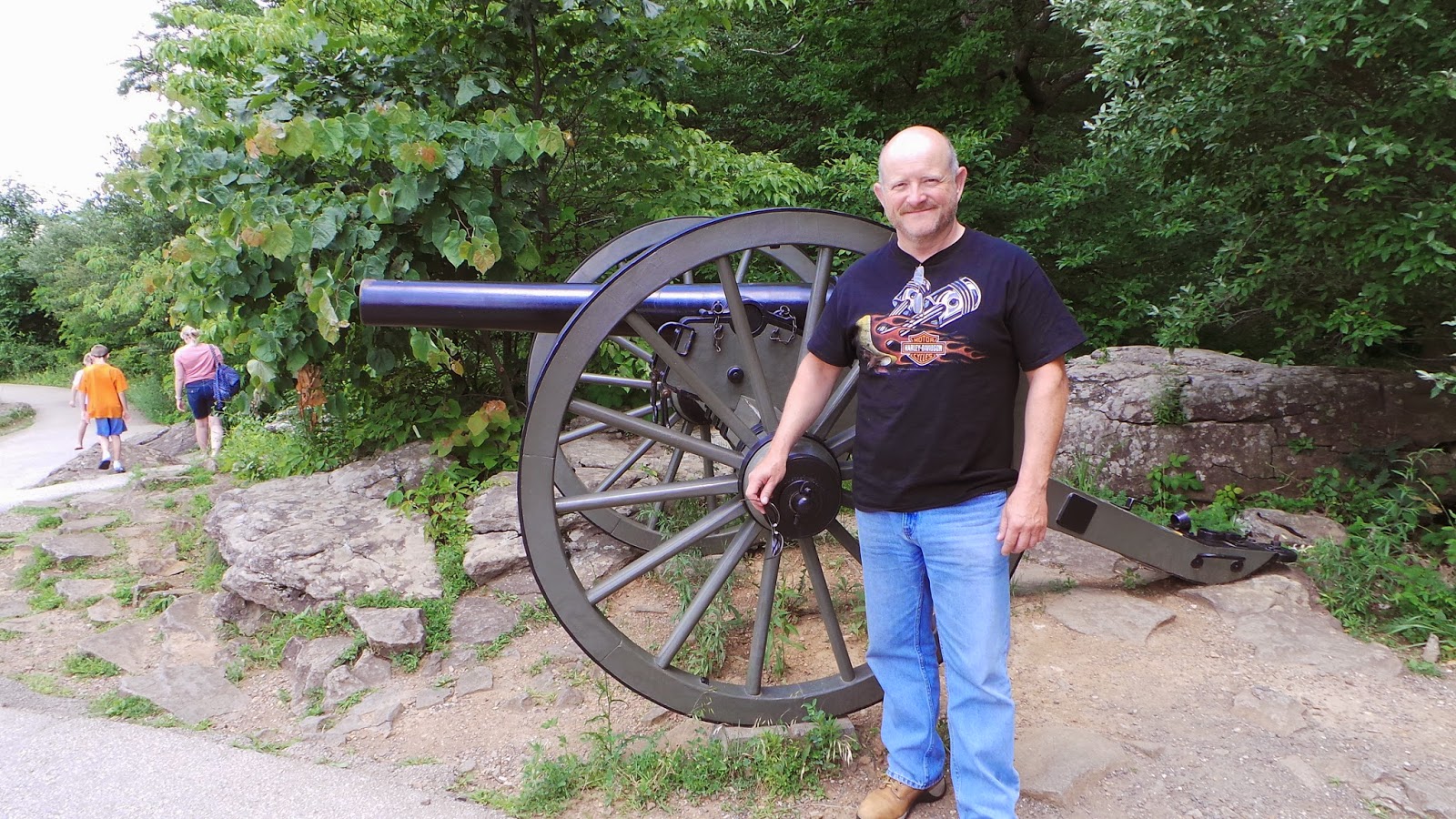Yesterday, Friday 27th June we visited the Gettysburg National Military Park, Museum and Visitor Centre. (http://www.nps.gov/gett/index.htm). Gettysburg was on our most important list of places to go. We knew of the American Civil War battles that took place here and we had read Presidents Lincoln's famous "Gettysburg Address." What we didn't quite appreciate was the scale of the fight between the Union and Confederate armies and the fundamental importance of the outcome and how it chanced the Civil War and the entire history of America to this very day.

The Park is huge covering nearly 6000 acres of battlefields and is populated with some 1,350 monuments markers and memorials to the brave men that fought and lost their lives here on the 1st, 2nd and 3rd July 1863. The park is visited by more than 1.8 million visitors per year. We started in the visitor centre and for $36 we each got to view a 25 minute movie inside a proper cinema explaining in detail the history leading up to, and the breakout of civil war and subsequent battles that took place in Gettysburg. Following the movie we got to view the "Gettysburg Cyclorama." The cyclorama is a 360-degree oil on canvas painting measuring 377 feet long and 42 feet high that depicts the most critical battle at Gettysburg, the battle of "Picketts Charge." It was painted by Paul Dominique Philippoteaux and completed in 1884.
Our entrance ticket also included access to the Museum, which is excellent and a 2 hour plus narrated bus tour around all the key points of the battles fields. This was really very interesting and on it's own worth the $36.
Here are some photographs of the Gettysburg Cyclorama.
You can't imagine the horror and the sounds and smells of being in land battle like this. The Union Army of some 94,000 soldiers and the Confederate Army of some 72,000 soldiers clash in Gettysburg. Nearly 10,000 soldiers were killed in just 3 days and countless wounded and captured as prisoners of war.
After viewing the Cyclorama we proceeded to our bus tour.
Our Tour Guide was first-rate and had a very detailed and passionate understanding of the history of Gettysburg and brought wonderfully to life for us the full story for us. He delivery and knowledge were fascinating.
This is the "Eternal Light Peace Memorial" standing prominent in the park overlooking the battlefields. It is made from Maine Granite (the Union, the North) and Alabama Limstone (the Confederates, the South) and signifies the country once again coming together and being whole.
This is "The Flame of Eternal Peace"
This is "Little Top" looking down into "Devils Den" it was held by the Union Armies during the 3 day battles and Confederates "The Rebels" made several unsuccessful attempts to capture it.
Looking out over "Little Top." There are original canons all over the park placed in the positions they were pointing during the Gettysburg battles.
This part of the battlefield is called "The Angle" it was the scene of utter devastation for the Confederates as they executed what became known as "Pickett's Charge" during the 3rd and final day of battle at Gettysburg.
This is what the 'carnage' would have looked like with thousands of Confederate Soldiers trying to break through the Union's middle ranks, but they failed. These photo's were taken from the 360 degree Cyclorama Oil Painting
The Gettysburg Address was a speech by U.S. President Abraham Lincoln, and is one of the best-known in American history. It is well worth a read.
It was delivered by Lincoln during the American Civil War, on the afternoon of Thursday, November 19, 1863, at the dedication of the Soldiers' National Cemetery in Gettysburg, Pennsylvania, four and a half months after the Union armies defeated those of the Confederacy at the Battle of Gettysburg.
The Civil War was the central event in America's historical consciousness. While the Revolution of 1776-1783 created the United States and independence from British Rule, the Civil War of 1861-1865 determined what kind of nation American would be.
The war resolved two fundamental questions left unresolved by the revolution: whether the United States was to be a dissolvable confederation of sovereign states or an indivisible nation with a sovereign national government; and whether this nation, born of a declaration that all men were created with an equal right to liberty, would continue to exist as the largest slaveholding country in the world.
What happened in Gettysburg on those first three days in July 1863 ultimately lead to the United States of America that we know today.


















































